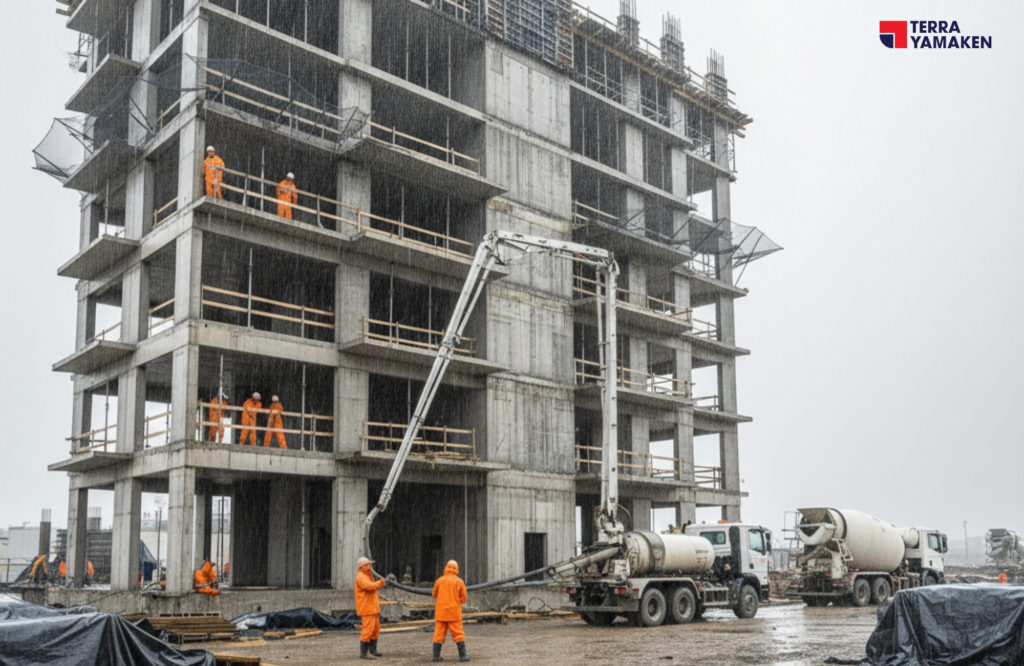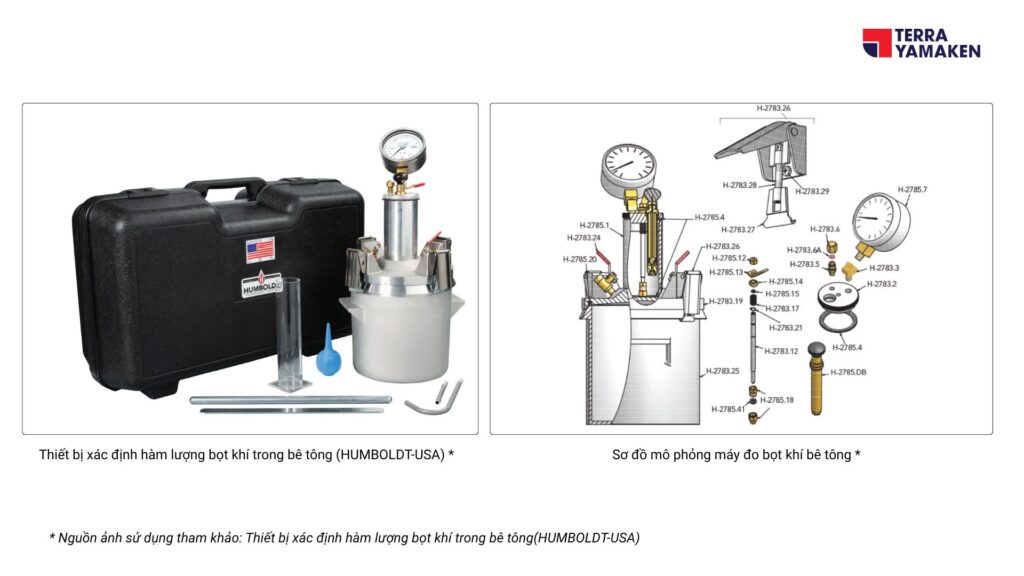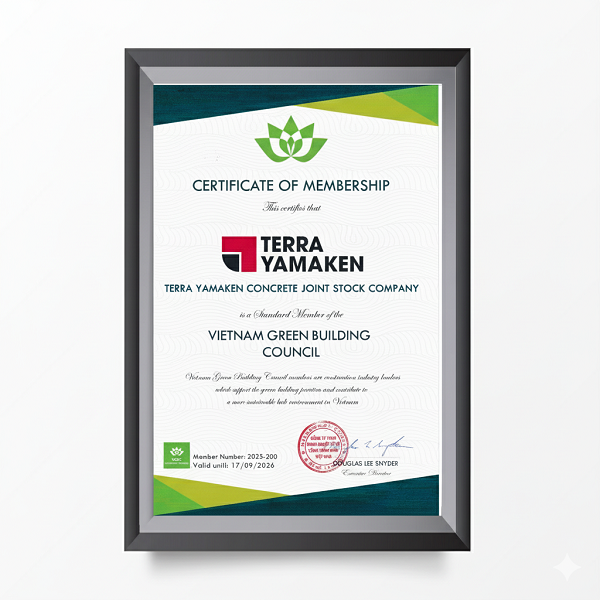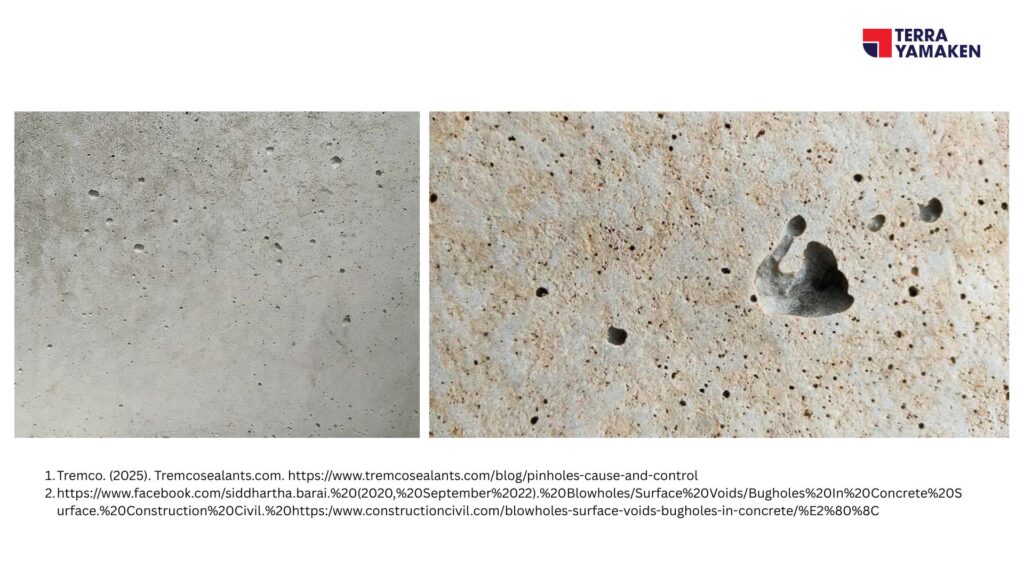TCVN 3118:2022 is the Vietnamese standard governing the method for determining the compressive strength of heavy concrete. This important document guides the techniques and methods of measuring the quality of concrete in construction projects. Key contents of this standard include:
1. Sample Preparation:
– Samples are prepared according to TCVN 3105:2022, kept in laboratory conditions for at least 4 hours before testing. If cured by water immersion, the storage time is 24 hours.
– Ensure samples are free from defects such as cracks, large pores, or signs of segregation.
2. Equipment and Tools:
– Use a compression machine with an appropriate force scale and loading rate, with an error of no more than ±1.0% or ±2.0%.
– Ensure the compression platen surfaces are clean and the sample is accurately centered.
3. Conducting the Test:
– Place the sample in the compression machine, choosing two faces for compression so that the compressive force acts parallel to the open face when the sample was cast.
– Increase the load continuously at a constant rate of (0.6 ± 0.2) MPa/s until the sample fails. The loading time should be no less than 30 seconds, unless the concrete has low strength.
– Determine the load-bearing area of the sample by measuring the dimensions of two pairs of parallel edges of each load-bearing face, accurate to 1 mm.
4. Determining Failure Load:
– The failure load is the maximum load attained during the test.
5. Checking Failure Mode:
– Check the mode of failure of the sample according to Appendix A. Discard results if the failure mode is inappropriate.
6. Expressing Results:
The compressive strength of the sample ( R ), calculated in megapascal (MPa), accurate to 0.1 MPa, is determined using the formula:

where:
- P is the failure load of the sample, measured in newtons (N);
- A is the load-bearing area of the sample, measured in square millimeters (mm²);
- α is the conversion factor for adjusting the test results obtained on non-standard samples to the compressive strength of standard samples (cubic samples with dimensions of 150 mm x 150 mm x 150 mm). The α factor is determined experimentally according to the procedure in Appendix B or taken from Table 1.
Strength of the Sample Set:
The compressive strength of the sample set (usually consisting of 3 samples) is calculated by the average of the compressive strengths of the 3 samples in the set, under the following conditions:
– The maximum and minimum values among the 3 sample compressive strengths must not deviate more than 15% from the remaining strength value (average of the remaining two samples or the average of all three samples if permitted).
– If one of the three sample strength values deviates more than 15% from the remaining value, the compressive strength of that sample set is not calculated and the test must be reconsidered.
Important notes:
– Before compressing, samples must be properly preserved according to TCVN 3105:2022 and TCVN 3118:2022 standards (e.g., stored in laboratory conditions or submerged in water).
– Samples must not have defects such as cracks, edge loss greater than 10 mm, or holes larger than 10 mm and deeper than 5 mm.
– The loading rate during sample compression must be controlled according to standards (usually (0.6 ± 0.2) MPa/s).
– The compressive machine must have appropriate force scales and loading rates, with an error not exceeding ±1.0% or ±2.0%.
For the most detailed and complete information, you should directly refer to the standard TCVN 3118:2022 Concrete – Method for determination of compressive strength.
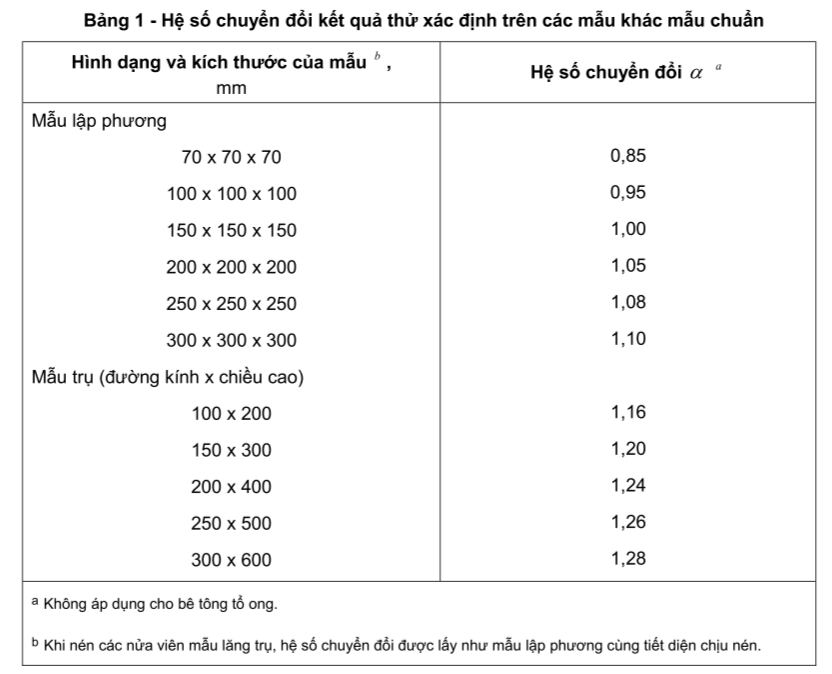
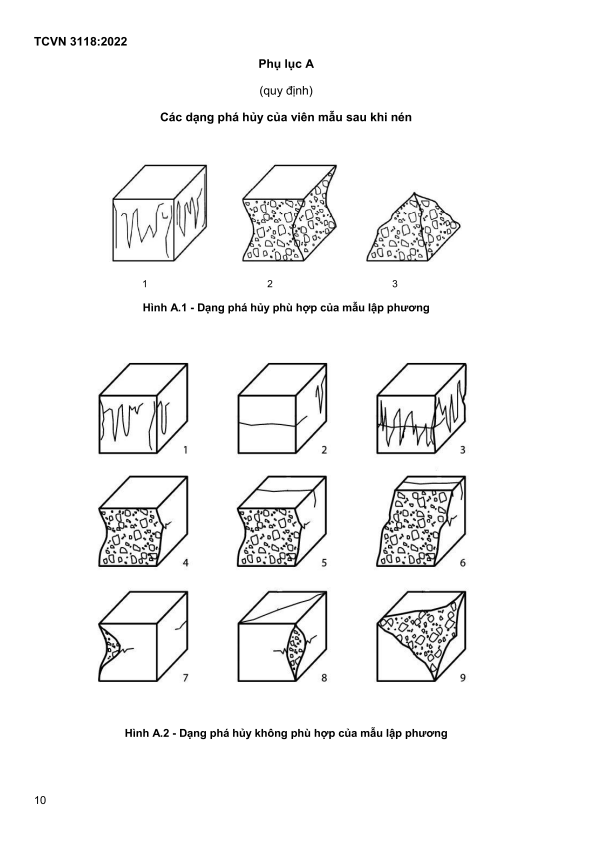
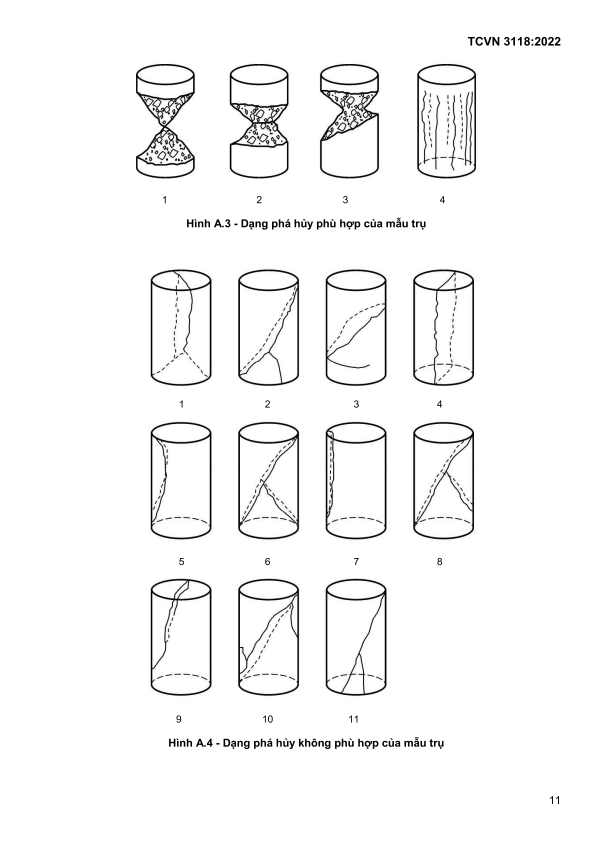
The report should include the following information:
– Date of sampling and date of testing.
– Sample designation, concrete age, curing conditions.
– Dimensions and load-bearing area of the sample.
– Failure load and failure mode of the sample.
– Compressive strength of the sample and the sample set.
– Reference to the TCVN 3118:2022 standard.
– Name of the person conducting the test.
This guidance ensures that the testing and reporting process is conducted accurately and comprehensively according to the specified standards.


